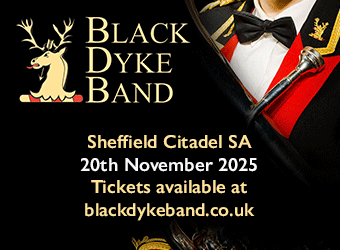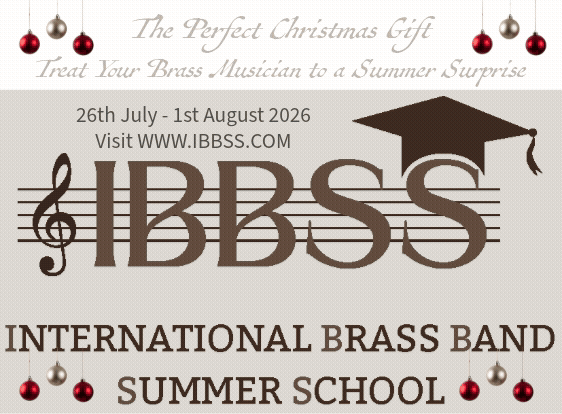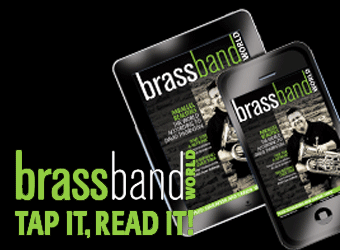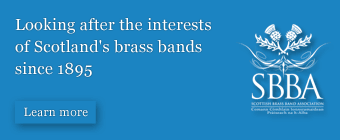
In another life Philip Sparke would have been a brilliant human anatomist.
No other composer for the brass band medium so expertly dissects the corpus of a test-piece to reveal its innermost workings quite like him.
There is no reliance on AI technology or vague diagnosis: He simply opens up the body to reveal its heart and internal viscera to those who need to fully understand just how it works.
The ineffable mysteries of the soul are left to others to contemplate. He deals with the practical realities of contest compositions.
Expert craftsman
In doing so there is no pretext disguise or poetic licence either – just an expert craftsman displaying his gifts in full.
He tells you upfront of just what, why and how his compositions are set out, as well as the clear instructions on how to understand his methodology.
When was the last time you heard a Sparke composition blighted by obesity, botox paralysis or Turkish teeth bling?
His form of craftsmanship is learnt not given - the years of rigorous compositional discipline that like a surgeon has enabled him to cut away the purposeless fat and cosmetic enhancements so beloved by too many modern-day technology obsessed composers for the medium.
When was the last time you heard a Sparke composition blighted by obesity, botox paralysis or Turkish teeth bling?

Philip Sparke's works don't need false bling to give them extra bite...
How it works
He knows exactly how a brass band works, what make its tick, and what its natural capacity limit for dynamic overload and technical excess is.
‘A Road Less Travelled By’, the set-work for the Championship Section at this year’s European Championships is a perfect case in point.
Not programmatic
The title alludes to a 1916 poem by the American writer Robert Frost (1874-1963) – ‘The Road Not Taken’.
it holds not programmatic inspiration, other than the fact that the poem illustrates his view of how composition can unexpectedly (Frost calls them instinctive decisions) develop in different directions.
Yet like ‘Perihelion’, the title of which he is said to have taken from a newspaper article on the day the sun was closest to the earth, it holds not programmatic inspiration, other than the fact that the poem illustrates his view of how composition can unexpectedly (Frost calls them instinctive decisions) develop in different directions.

The composer displays his instinctive decsion making in the work
Sinews and vessels
It has a ‘traditional’ three movement format that bears his hallmarks in full; the intricate, flowing opening (Moto Perpetuo - 120), connected in musical syntax and form is Sparke revealing the sinew-like links and blood vessel motifs that hold the structure of the compositional body together.
The music is both taut and flexible, with purpose as well as meaning to every entry – from the opening pianissimo entries on euphonium and Eb tuba to the Gioioso climax (still just fortissimo) that dissipates to the following central ‘Nocturne’.
Free fantasia
Sparke describes this as “a free fantasia” with solos for vibraphone, flugel, horn and euphonium.
Each is languid and malleable in shape - arteries that link to a cornet shaped heart that provides the core lead with echoes heard around the band, the dynamic pulsing softly, muted and gentle to the touch.
The beauty is of sensitivity – an appreciation of the elegant lines that shape the life blood of the music. The climax (still only fortissimo) has a sensuous warmth that ebbs away to almost nothing.
It is a romp – an authentic knees up brilliant romp at that – “mercurial and quixotic” in nature as the composer describes it, as it darts in different directions and meter.
Romp
The ‘Scherzo finale’ is vivacious, pacy (but not frenetic at 138) and precise; led by the cornet but soon joined in intricacy and development by the rest of the band.
It is a romp – an authentic knees up brilliant romp at that – “mercurial and quixotic” in nature as the composer describes it, as it darts in different directions and meter.
It culminates in a reprise (just upped in pace from 144 to 152) as if Sparke the anatomist is satisfied with his work and quickly stiches up the corpus to end things with a coda twist and quick scissor stich flourish.
Iwan Fox













